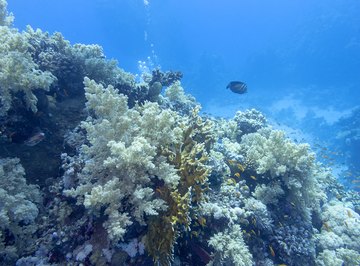
In order to understand why fishermen from the coasts of Borneo and Sumatra used to save fish scales among other fish parts to make glue, you have to understand the chemical composition of fish scales. According to NIMS (See References) fish scales are made of calcium phosphate and protein or collagen. Apparently the heat releases the calcium from the collagen resulting in a sticky glue.
- Fish scales
- Boiling water
This glue is not for human consumption
Collect the fish scales from a fish like the salt-water trout. Maybe you have access to a fish market's trash where they scale fish everyday before they prepare them for cooking. You will need to get about 12 ounces of scales to make a few ounces of glue.
Wash the scales thoroughly in plenty of water, straining them through a sieve during the rinsing. Remove as much of the fish odor as possible or your glue will be intolerable.
Cover the fish scales with water until they are just covered in a heatproof covered container. Bring it to a boil and let it simmer until the scales turn into a mass of soft viscous mush. Do not allow any extra water to get into the pot and keep the fluid from evaporating from the container. The fishermen used to put it into a closed container which they put into a large container of boiling water.
Cook the mixture on low heat for several hours. Allow 6 to 8 hours for the collagen to dissolve releasing the calcium phosphate into the water. When this glue is applied, the water dissolves and the calcium phosphate will form a bond with whatever it touches.
Remove the container from the heat and inspect the contents. If the scales have dissolved, cool the mixture and keep it closed until you are ready to use it. This should produce a clear, mucilaginous glue that is a strong adhesive. Keep it cold and tightly closed when not in use. The glue is good for up to 6 weeks.
Things You'll Need
Warnings
Resources
About the Author
Maryland resident Heide Braley is a professional writer who contributes to a variety of websites. She has focused more than 10 years of research on botanical and garden articles and was awarded a membership to the Society of Professional Journalists. Braley has studied at Pennsylvania State University and Villanova University.
